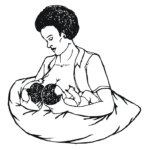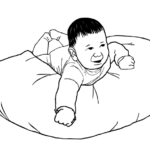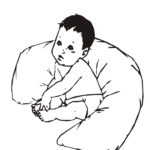Here’s a question from Jessie from Guelph, ON :
Q: I’ve heard that breastfeeding delays the return of menstrual periods, so it’s safe to assume you can’t get pregnant if your periods haven’t returned. Is that right?
A: It’s true that breastfeeding tends to delay the return of your periods, but you will ovulate before your first period resumes. You could therefore become pregnant before your period returns.
The best way to use breastfeeding to delay the return of ovulation (egg production) is to observe the LAM, or Lactation Amenorrhea Method which is said to be 98% effective, but only if the following rules are observed:
– Your baby is younger than 6 months old
– Your periods have not returned
– You are exclusively breastfeeding on demand, night and day
“Exclusively breastfeeding” means a minimum of six long breastfeeding sessions every 24 hours – with a gap between feedings no longer than four hours during the day and six hours during the night. It’s also important not to give other fluids or solid foods to your baby. Soothers can also interfere with the success of LAM, as your baby’s suckling stimulates the hormones that suppress ovulation.
Nancy Lahn
Owner, Cozy Cuddles Baby Products
Originally posted 2013-09-04 13:46:34.

 A: Thanks for inquiring about the use of the Cozy Cuddles Nursing Pillow for twins! Yes, absolutely you can nurse both babies at once using our pillow – many, many customers have done just that!
A: Thanks for inquiring about the use of the Cozy Cuddles Nursing Pillow for twins! Yes, absolutely you can nurse both babies at once using our pillow – many, many customers have done just that! You can also feed them in three other positions – the front cross (both in the cradle hold), one in football hold and one in cradle hold, or the upright latch where the Mom uses the “laid-back” position. In this graphic, Mom is nursing one baby in the laid-back position but both twins can be nursed at once positioning them this way.
You can also feed them in three other positions – the front cross (both in the cradle hold), one in football hold and one in cradle hold, or the upright latch where the Mom uses the “laid-back” position. In this graphic, Mom is nursing one baby in the laid-back position but both twins can be nursed at once positioning them this way. Here
Here  you can see other uses for the Cozy Cuddles Nursing Pillow as well. They can lie on it on their back from newborn to be propped up (to see what’s going on in the room or to play with their “play gym” toys, for supervised “tummy time” once they gain neck strength, and later (around 6 months) for giving them support as they learn to sit up. Many parents of twins use two Cozy Cuddles pillows for these purposes.
you can see other uses for the Cozy Cuddles Nursing Pillow as well. They can lie on it on their back from newborn to be propped up (to see what’s going on in the room or to play with their “play gym” toys, for supervised “tummy time” once they gain neck strength, and later (around 6 months) for giving them support as they learn to sit up. Many parents of twins use two Cozy Cuddles pillows for these purposes.